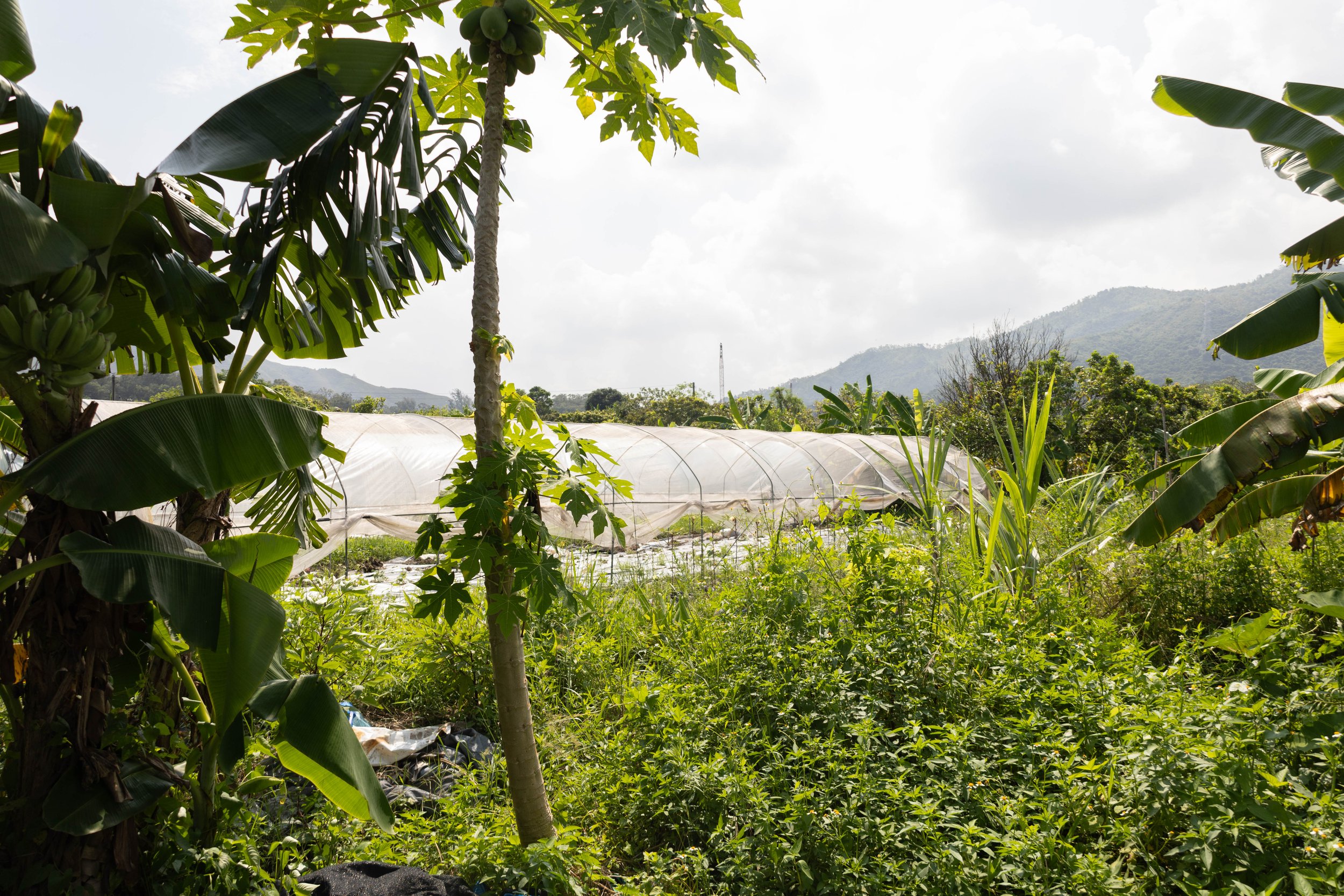
May 2023
Noah’s Forest used to be a chicken coop, and there is an old lychee forest in the backyard. Vienna, the owner, took over this land from her father and hopes to revitalise the land through regenerative farming methods, and use it as a base for promoting early childhood education in the future. Currently, about 120 square meters of land is using regenerative farming methods.
After trimming, the crops underneath the trees can grow with plentiful sunlight.
Before trimming, the whole farming area lacks sunlight.
Vienna learnt that after years of planting fruit trees on the farm and due to the lack of organic matter in the soil on the sloping land, the most important thing to do to turn this rewilded plot into a productive farmland would be to make compost first. Vienna collected the leaves from their own forest and the wood chips from YPark, mixed them with water and molasses, and allowed them to sit for 4 to 5 months. She then applied a thick layer of compost to the soil before planting.
At the same time, they have also prepared a compost tower using the Johnson-Su method, which is designed for passive ventilation, allowing the materials to be better decomposed by fungi. The current compost tower has been built for 5 months, which is halfway through the theoretical time of 9 months, and they have already begun to see the transformation of the middle material into healthy brownish black compost.
A Johnson-Su composting tower.
The land using regenerative farming is shown as the green area.
As the site is in an initial development stage, there are still many trees on the land. With environmental protection in mind, Vienna has only trimmed one large tree in the middle of the site to introduce sunlight to the farming area.
The central part of the compost has turned dark.
Set up for leaves and wood chips composting
However, since the farm is still in the early stage of planting, there is not enough compost material, and the wood chips provided by YPark have decreased. As a result, the compost on the soil surface decomposed, and in the later part of the season, wasn’t enough to cover the soil. Although the crops are still growing healthily, the soil is beginning to return to its hard and compacted state which is typical of a sloping hillside.
Well covered land when mulching material is abundant.
Insufficient coverage of land due to the lack of materials
With the advice and guidelance from Homeland Green, Vienna also makes wild ferments to supplement nutrients and microbes for the plants and the soil. For the fermented plant juice, the mixing ratio is 1 kg of molasses and 1 kg of leaf material. To prepare the materials, Vienna cut the leaves into small pieces and mixed them with molasses in a container until even. They then placed the mixture under a table or away from direct sunlight for 7 days. After fermentation, they used 3 tablespoons of the liquid with 1 litre of water and applied it to the field. Another kind of wild ferment they used is a mixture of banana, papaya, lemon, and molasses.
Fermenting liquids with different kinds of plant materials.










